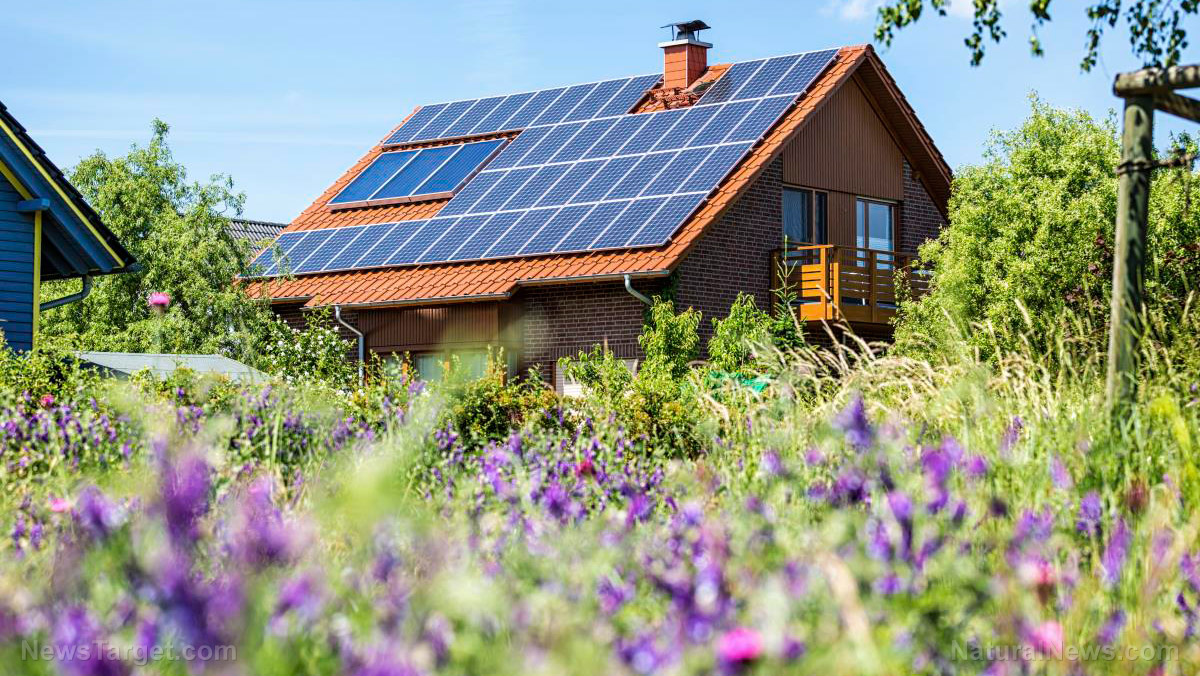What you need to know about using batteries with solar panels
12/17/2018 / By Edsel Cook

Things aren’t as simple as getting electric storage devices and solar panels, hooking them up together, and calling it a day. Fortunately, a Ready Nutrition article covered the basics of getting the most use and longevity out of your solar-powered batteries.
Perhaps the most important characteristic of a battery is its depth of discharge (DoD). This is the capacity that has already been used. It is usually defined as a percentage of the maximum capacity.
Most manufacturers will tell you about the optimal DoD for the battery before it needs recharging. It is safe and efficient to use the battery up until it reaches this mark.
Say you have a 10 kilowatt hour (kWh) battery with a DoD of 80 percent. You can use up to 8 kWh of the battery without degrading the efficiency or the life span of the energy storage device.
Do not use the battery past its DoD. If you drain it, its lifespan will be shortened. However, there will be times that you will need to push it past the DoD, so just keep the long-term penalty in mind. (Related: Do you know what to do during a power outage? Here are 5 essential things you need.)
The depth of discharge, power rating, and round-trip efficiency of batteries
Another characteristic of a battery that any prepper should know about is the power rating. It is the amount of electrical juice that an energy storage device can deliver at any time. This is measured in kWh.
The power rating becomes important when you combine a battery with solar panels. A unit that features a low power rating alongside a high capacity can provide an electric appliance or tool with all the power it needs for long periods of time.
To pull this off, you have to determine the cycle of your battery. This is the period starting with the charging of the unit and its subsequent draining. The warranty of the battery should tell you what its cycle is.
Next, calculate the round-trip efficiency of the unit – the percentage of stored power that is actually available for use. Your battery might be rated for 10 kWh, but if it has an 80 percent round-trip efficiency, you only have 8 kWh available.
You can keep the round-trip efficiency high by getting high-quality batteries, avoiding draining it past the DoD, and protecting it from harsh temperature and weather. As with all things, if you take good care of your battery, it will take good care of you when SHTF.
Other important matters to know about your battery
Batteries designed for use with solar panels can last up to 15 years. This lifespan will be affected by the amount of power you use and the energy you can load into the storage device.
If you plan to rely entirely on your solar panels for power, you will need an array of at least four batteries to ensure you have power at all times. Once you have funds to spare, get a second set of batteries as a back-up to the first array.
Lithium-ion batteries are considered to be the best type of batteries for these off-grid power systems. Nickel-cadmium ones are a good substitute because they are mature technology and are much easier to maintain. If you use lead-acid batteries, pick a recombinant battery that is either a gel or an absorbent glass material (AGM) type.
Keep track of how much power you use every day and over time. Be mindful of the times that you will need to draw power from a different source; cloudy or stormy skies will all but eliminate sunlight.
Pick up more tips about living free from the constraints of the power grid at OffGrid.news.
Sources include:
Tagged Under: battery, bug out, energy storage devices, green living, green power, homesteading, how to, lithium ion batteries, off grid, preparedness, prepper, prepping, SHTF, solar panels, survival, survivalist, sustainable living

















